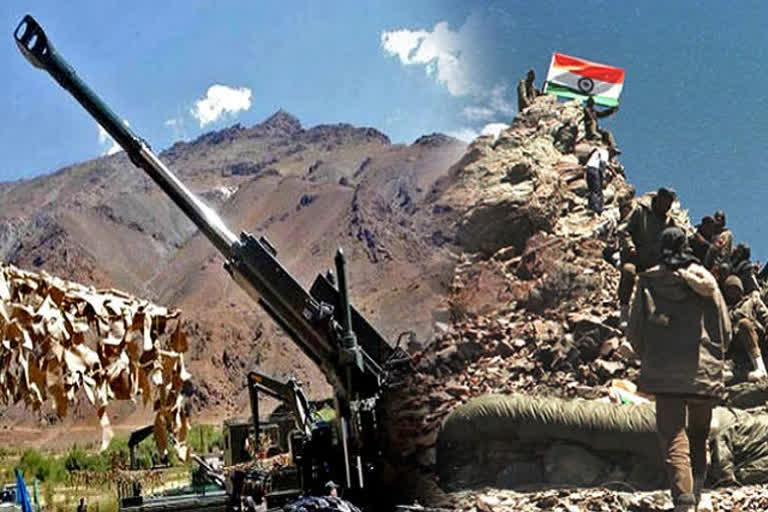New Delhi:The Kargil war took place between May and July 1999 in the Kargil district of Kashmir and elsewhere along the Line of Control (LoC). During February 1999, the Pakistan Army sent forces to occupy some posts on the Indian side of the LoC, an attempt that resulted in the Kargil war, remembered for the sacrifice of Indian soldiers, till date.
Pakistani intrusions took place in the heights of the lower Mushkoh Valley, along the Marpo La ridgeline in Dras, in Kaksar near Kargil, in the Batalik sector east of the Indus River, on the heights above of the Chorbatla sector where the LOC turns North and in the Turtok sector south of the Siachen area.
An infamous gang comprising four generals — Pakistan’s army chief, General Pervez Musharraf; the Chief of General Staff (CGS) Lt. General Aziz Khan, Corps commander of X Corps, Lt General Mahmud, and the commander, Force Command Northern Areas (FCNA), Major General Javed Hasan - planned the Kargil operation in secrecy.
READ:|The Param Virs of Kargil War
Former Indian Army chief Capt Amarinder Singh, wrote in his book, A Ridge Too Far, that the idea of invading Indian land originated in a 1980s Pakistani war-game. It was suggested by the Pakistan Army, first to then Pakistani president Zia and then to the other Pakistani PM Benazir Bhutto, but both refused to go along with it considering the dangers that lied behind it.
Capt Amarinder Singh noted that after India's conduction of Operation Brasstacks in 1986, the Pakistani side developed a war game known as Operation Tupac. The game ran a simulation scenario of the possibilities in case of the Pakistani invasion of India territory.
A decade later, in 1998, once Gen. Pervez Musharraf's appointment as Pakistan’s Army Chief, he took up Operation Tupac and decided to implement it. Sensing that it was losing in its nefarious designs in the valley, Pakistan refined the operation and relaunched as Operation Badr.
The strategy behind the operation was clear. The political scenario in India during early 1999 was perceived to be unstable, and thus Pakistan expected a bare minimum reply from the Indian side. Also, Pakistan wished to create a situation that would enable it to negotiate by securing the large tracts of Indian territory across the LOC.
READ:|Kargil War: Decisive battles that turned the tide in favour of India
It also aimed to internationalise the Kashmir issue by launching a military operation on India.
Because both India and Pakistan had tested nuclear weapons, Pakistan thought it was an opportunity to resort to limited offence with minimal risk. It hoped for the international community to intervene as both the countries were nuclear powers, giving a boundary to Pakistan so that it could achieve its goals.
Pakistan also aimed to initiate operation in areas where it might face the least resistance. Altering the status quo of Loc for strategic and territorial gains and reviving insurgence in the Kashmir valley and isolation of the Ladakh sector from Srinagar were some of its aims.
The neighbour's troops had plans to block NH-1 which is the lifeline of the Indian troops based in Leh. It expected a panicked India to turn to the international community. This would lead to negotiations on Kashmir, or at least to India vacating the Siachen glacier it had occupied in 1984.
